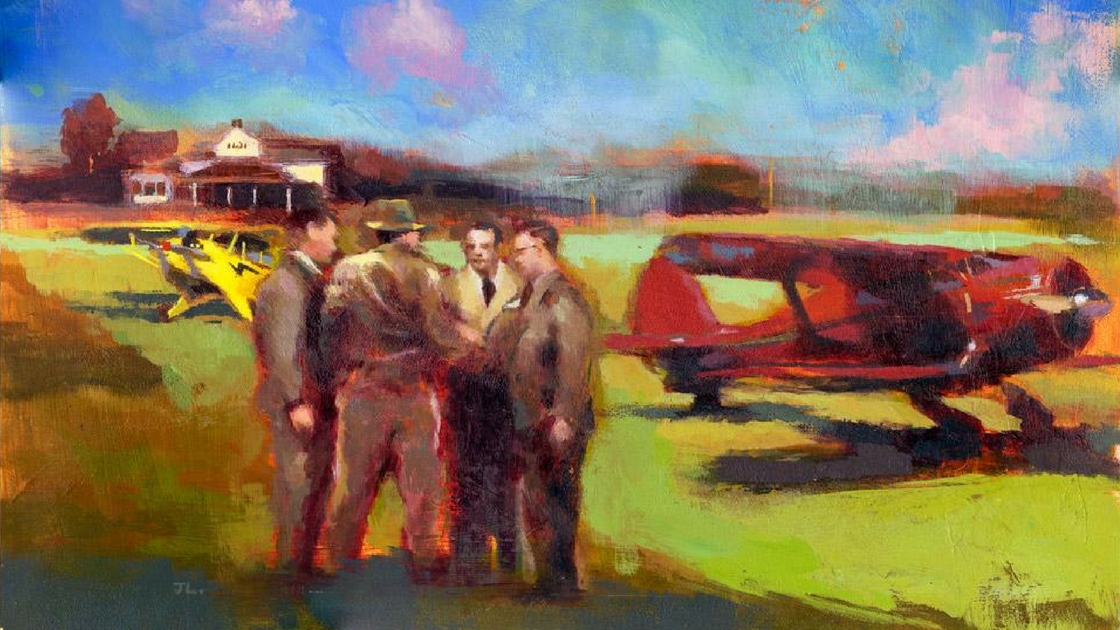The Pylon Club was a club composed of pilots and aviation enthusiasts. It was headquartered at Patco Airport, then located on Ridge Pike in Plymouth Township. Though this Pylon Club no longer exists in the Freedom Valley and no trace of the airport remains today, its impact has had profound influence throughout the United States and beyond.
During the second week of December in 1931, a group of 18 individuals dedicated the clubhouse of the Pylon Club, according to The Philadelphia Inquirer on December 13th of that year. The clubhouse included three buildings, each a reproduction of a Colonial-era structure. Among the buildings was a reproduction of Benjamin Franklin’s print shop and two Colonial-style houses.
These three buildings had been constructed as part of an exhibit for the Sesquicentennial International Exposition in Philadelphia in 1926. The exhibit was called by several different names, including “Colonial High Street”, “Old High Street”, or “Street of 1776”. This international fair was designed to celebrate the sesquicentennial – the 150th anniversary – of the United States. The exposition was built along both sides of Broad Street from Packer Avenue to the former Philadelphia Navy Yard in South Philadelphia.
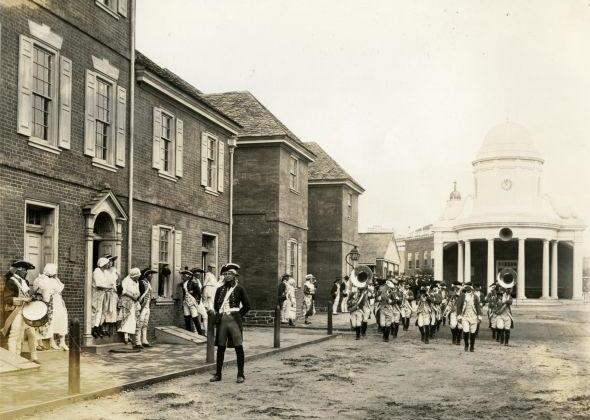
Colonial High Street, seen in the above photograph from the City of Philadelphia, was one of the highlights of the Sesquicentennial International Exposition in 1926. Three of the more than twenty buildings were acquired by the Pylon Club and eventually moved to Plymouth Township.
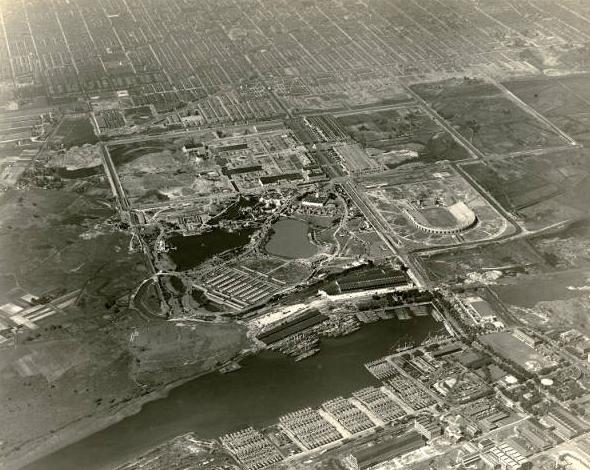
This is an aerial view of the Sesquicentennial International Exposition in the City of Philadelphia in 1926. The Philadelphia Municipal Stadium is seen to the right in this photo. This stadium was re-named in honor of President John F. Kennedy in 1964; the stadium was later torn down in 1992. The lake seen in the photo to the left of the stadium is one of the features in what was then called “League Island Park” – today known as “Franklin D. Roosevelt Park”. Broad Street separates the stadium from the park. Colonial High Street was situated near the middle of the exposition grounds, southwest of the intersection of Broad Street and Pattison Avenue.
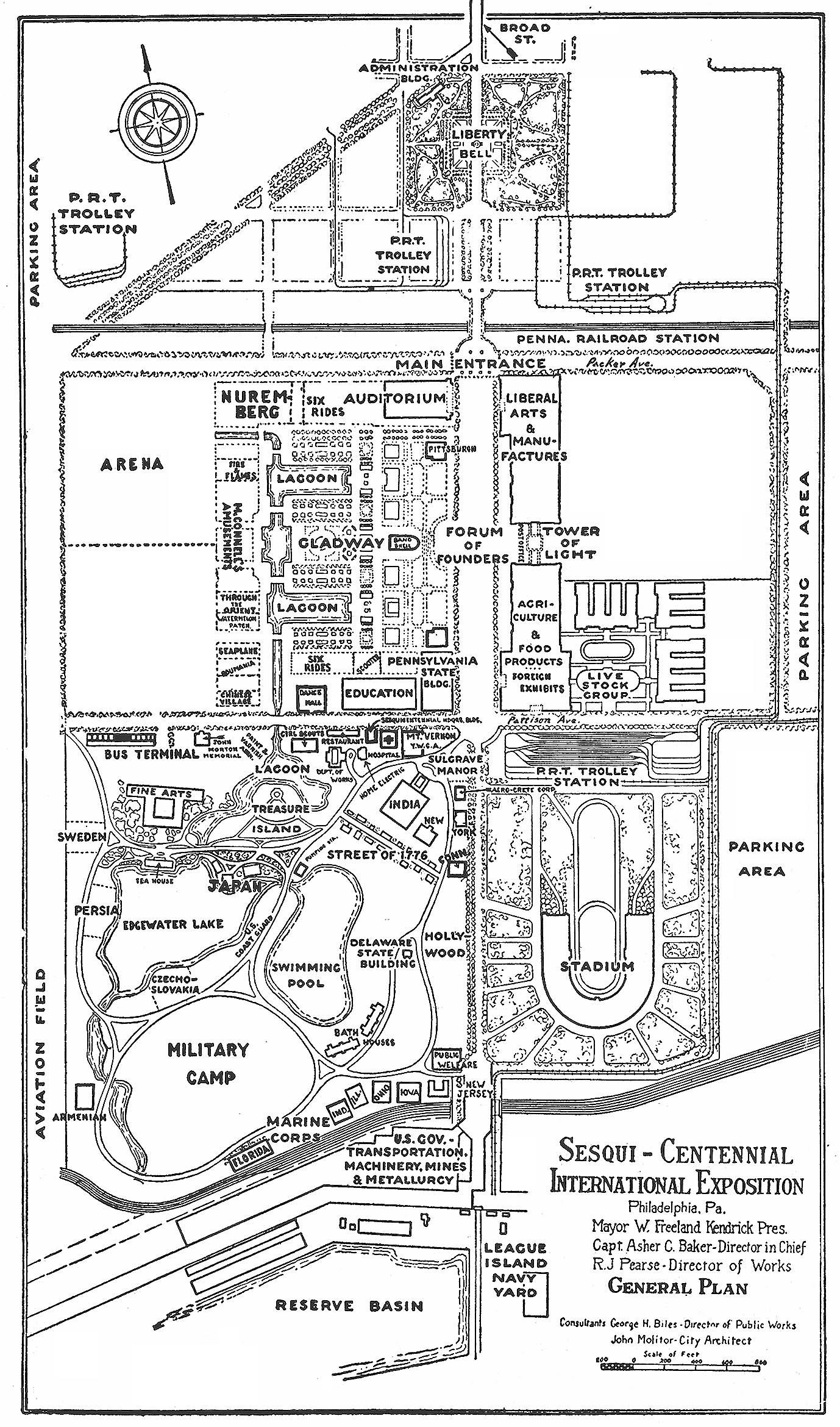
This image shows the layout of the Sesquicentennial International Exposition in the City of Philadelphia. Colonial High Street is marked on this map – near the center of the map – as “Street of 1776”.
According to the City of Philadelphia, the Colonial High Street exhibit included more than twenty buildings recreating High Street in Colonial times. “High Street” – even in Colonial times – was called “Market Street” by many of the local folks in Philadelphia. Eventually, the City of Philadelphia changed the legal name of the roadway to “Market Street” to reflect that reality.
Sometime after the Sesquicentennial International Exposition was closed, three of the buildings in the exhibit were acquired by the Pylon Club. These buildings were taken apart in Philadelphia and transported to Plymouth Township. Once in place on Ridge Pike, the Pylon Club had the buildings updated to include “modern conveniences.”
In a news article dated October 8, 1932, the Bluefield Daily Telegraph of Bluefield, West Virginia, indicated that the Pylon Club was composed of “prominent society folk who own and operate their own planes.”
Parties were common at the Pylon Club. On November 4, 1932, The Jewish Exponent of Philadelphia reported details about a Halloween Party and buffet supper for 120 people hosted by a Huntingdon Valley couple.
According to The Philadelphia Inquirer in a news article on December 18, 1932, at the time of the first anniversary of The Pylon Club, the organization included 57 members. Of that total, 45 were licensed pilots and 30 owned their own airplanes.
The Bee of Danville, Virginia, indicated in a news article dated October 23, 1933, that the Pylon Club was “nationally famous.”
Pilots in the Pylon Club would play “golf” by using airports as “holes”. The Billings Gazette of Montana reported in a news article on October 14, 1934, that the members of the Pylon Club were using six airports as fairways in the sky. “The aviator before landing must spot the hole by dropping a sack of flour,” according to the newspaper. “Then they land and play the hole.” Patco Airport was the first hole, with airports in Philadelphia, Blue Bell, and Willow Grove among other holes.
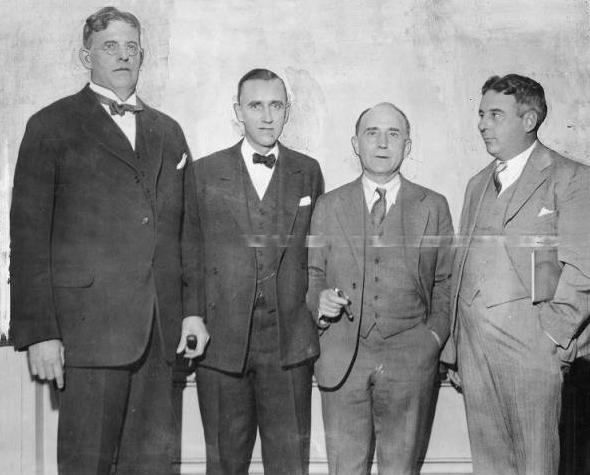
Members of the Aviation Committee of the Chamber of Commerce of Greater Philadelphia met at the Bellevue Stratford Hotel in Philadelphia on May 15, 1931. Pictured, from left to right, are Mr. Fred Johnson, Mr. Ward Van Orman, Mr. Robert Hedtler, and Mr. C. Townsend Ludington. Eight years later, Mr. Ludington was one of the five individuals that founded the Aircraft Owners and Pilots Association.
Members of the Pylon Club were active in promoting private aviation in the 1930’s. Not just locally, but throughout the nation. According to the Aircraft Owners and Pilots Association, members of the Pylon Club and others were discussing ways to advance the interests of private pilots and aircraft owners at this time in history.
On May 15, 1939, the charter for the Aircraft Owners and Pilots Association was signed. Five men were the charter members of this new non-profit organization, including Philip Sharples, Laurence Sharples (the first President of the Pylon Club), Alfred Wolf, C. Townsend Ludington, and John Story Smith.
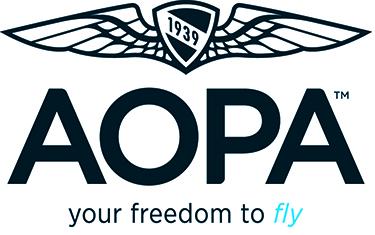
A news column printed on July 23, 1939, in the Amarillo Sunday News and Globe spoke favorably of the efforts of the “newly-created Airplane Owners and Pilots Association.” The column indicated that members were joining in “droves.” The section of the column dealing with AOPA ended with “We congratulate the officials of the AOPA, and wish it every success in the world. How can it miss?”
The Auburn Parker newspaper reported similar thoughts in the Chicago area in a news article on February 21, 1940, as did the Concord Enterprise on August 14, 1940, in suburban Boston.
The AOPA grew throughout the nation. Within about 15 months of its founding, there were “nearly 2,000 pilot members” of the AOPA just in the Greater Chicago Area, according to the Chicago Daily Tribune in a news article dated August 30, 1940.
Though the United States was not officially participating in World War II at the time – “World War I” was still referred to as the “past World War” – plans had been underway to secure sufficient trained pilots to help defend the nation. Civilian pilots were working with governmental officials to enhance military preparedness.
The Pylon Club and the AOPA were directly involved in helping to establish and train pilots for Air Guard units, according to The Amarillo Daily News of Texas. According to a news article dated October 21, 1940, “A preliminary test of the guard’s usefulness was made early last summer when members of the AOPA from the Pylon Club of Philadelphia worked in cooperation with the Pennsylvania National Guard in their war maneuvers.”
The Amarillo Daily News stated “Whether we get in the present war or not and after the war is over even with Germany defeated, the Air Guard will continue to function as an aid to the community.”
The Gettysburg Times reported on April 12, 1944, that one of the members of the Pylon Club and AOPA came from Philadelphia to Gettysburg in 1942 to set up a training school for pilots. The newspaper stated that this individual “was one of the first selected to train men for the Army Air Forces” in Gettysburg.
Gettysburg – because it was more inland – was deemed as a good place for pilot training. Civilian airports along much of the Atlantic Coast and nearby areas were closed by order of the military after the attack on Pearl Harbor. Patco Airport was among the airports closed for civilian use during World War II.
Once the war ended, Patco Airport re-opened. Smilin’ Jack, a cartoon strip, highlighted an air event at the Patco Airport on June 21, 1947, in an issue of the Portland Press Herald in Maine and in the Tucson Daily Citizen.
The Patco Airport closed sometime in the early 1950’s, possibly in 1953. The land was then utilized for other commercial purposes.
On May 19, 1953, there was a robbery at the Seven-Up Company distributorship, according to a news article in The Philadelphia Inquirer printed on the next day. The news article described the building as “the depot, situated in the converted hangar of the old PATCO Flying Field.”
Though the airport had closed, the Pylon Club evidently was still operational. A fire hit the site on February 27, 1956, the Wilkes-Barre Record reported the next day. The news article indicated that the interior of the club was devastated in this fire; damage was estimated to be $20,000.00.
The Daily News of Huntingdon and Mount Union indicated in a news article on February 28, 1956, that this fire was the third clubhouse fire in three months. The newspaper article indicated that the club was now a private club rather than one focused on pilots and aviation enthusiasts.
What exactly happened after 1956 with the Pylon Club is not certain.
A news article on July 27, 1979, in The Philadelphia Inquirer indicated that the Pylon Club – uncertain if it is the same Pylon Club that was initially at Patco Airport – was now located at the Plymouth Square Shopping Center. The newspaper reported that the Commonwealth revoked the liquor license of the Pylon Club at that shopping center on July 17, 1979, for serving non-members and for selling liquor after hours.
Today, the records of the Commonwealth Department of State indicate that the Pylon Club officially created on July 7, 1932, is now listed as a “county orphan”. A second entity with the same name in Montgomery County, but that appears to be distinct with a different entity number, is still active as a non-profit entity, according to the Department of State.
In Part Four, we’ll detail further aspects of Patco Airport.
The top illustration was by Jerome Larrigue and provided courtesy of the Aircraft Owners and Pilots Association, 2014.
The photograph of the Colonial High Street exhibit is courtesy of the Department of Records of the City of Philadelphia, 1926.
The photograph of the aerial view of the Sesquicentennial International Exposition is courtesy of the City Parks Association of Philadelphia Records Collection of Temple University, 1926.
The photograph of the Aviation Committee of the Chamber of Commerce of Greater Philadelphia appeared in the Philadelphia Evening Bulletin in May of 1931, and is courtesy of the George D. McDowell Philadelphia Evening Bulletin Photographic Collection of Temple University.
The logo of the Aircraft Owners and Pilots Association is copyrighted property of that organization and is courtesy of the Aircraft Owners and Pilots Association.
Do you have questions about local history? A street name? A building?
Your questions may be used in a future news article.
Contact Richard McDonough at freedomvalleychronicles@gmail.com.
© 2018 Richard McDonough

